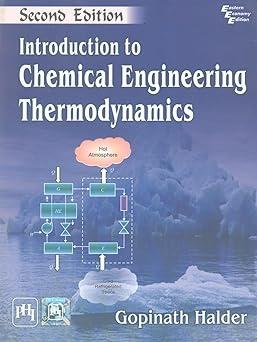Hydrogen bromide is produced by the following reaction: [ frac{1}{2} mathrm{H}_{2}(mathrm{~g})+frac{1}{2} mathrm{Br}_{2}(mathrm{~g}) ightarrow mathrm{HBr}(mathrm{g}) ] The
Question:
Hydrogen bromide is produced by the following reaction:
\[ \frac{1}{2} \mathrm{H}_{2}(\mathrm{~g})+\frac{1}{2} \mathrm{Br}_{2}(\mathrm{~g}) \rightarrow \mathrm{HBr}(\mathrm{g}) \]
The equilibrium constant at temperature \(420 \mathrm{~K}\) is given as \(\log K_{p}=2.44\), and \(\Delta H_{0}=\) -11970 cal at \(600 \mathrm{~K}\).
Given that \(C_{P_{\mathrm{H}_{2}}}=6.5+0.0009 T, C_{P_{\mathrm{Br}_{2}}}=7.4+0.001 T\) and \(C_{P_{\mathrm{HBr}}}=6.5+0.001 T\). Develop general expressions for the standard free energy change as function of temperature.
Fantastic news! We've Found the answer you've been seeking!
Step by Step Answer:
Related Book For 

Question Posted:





